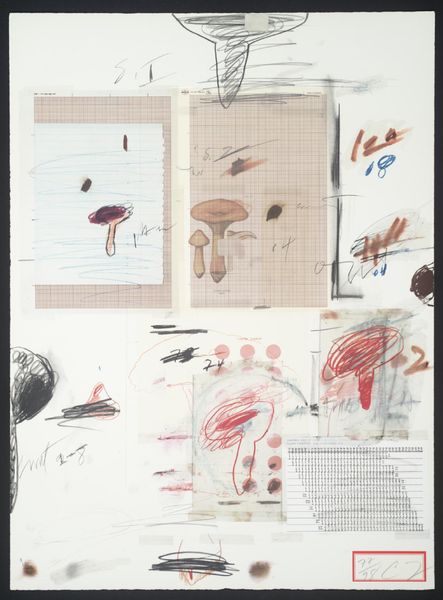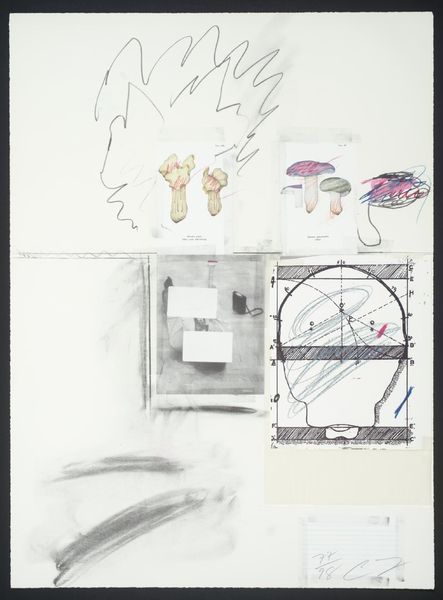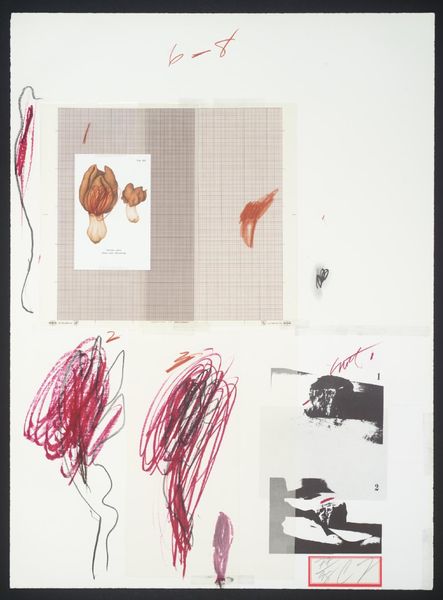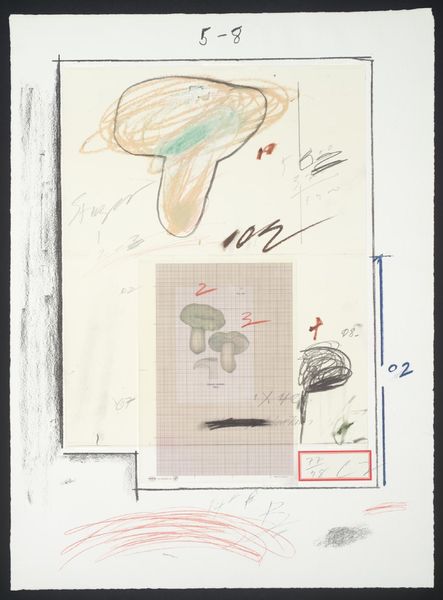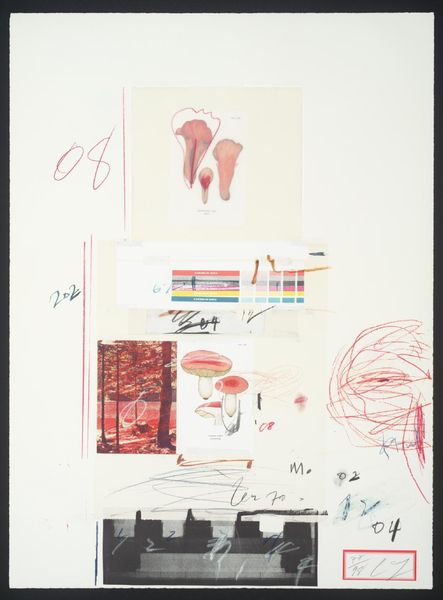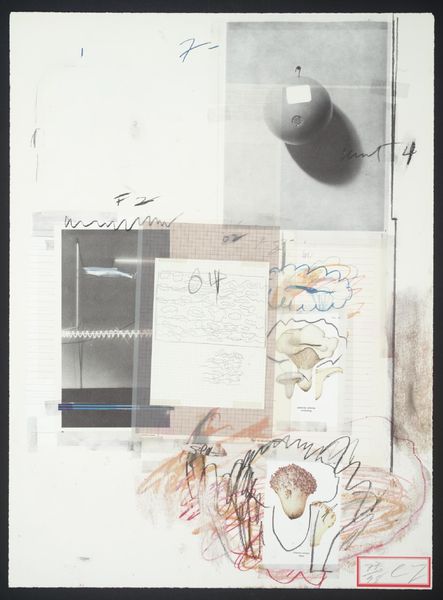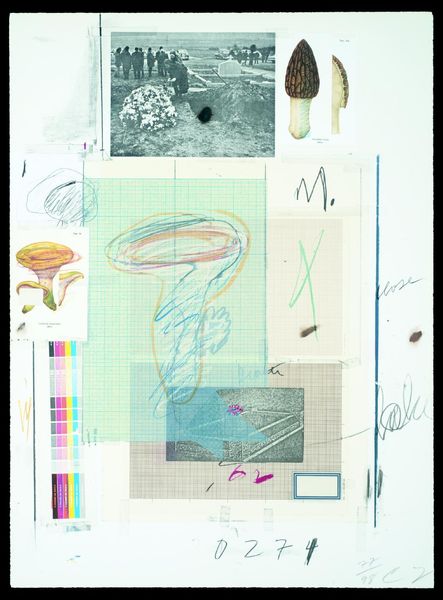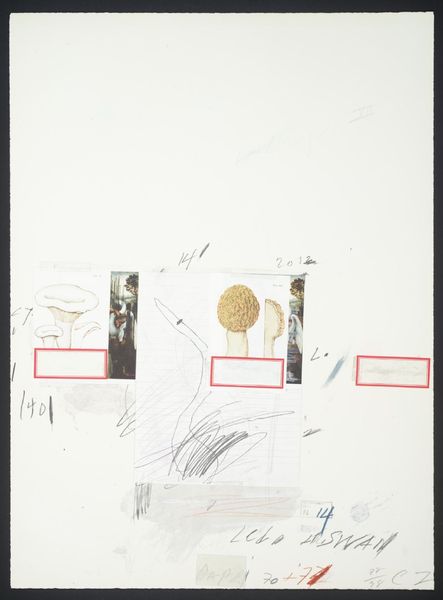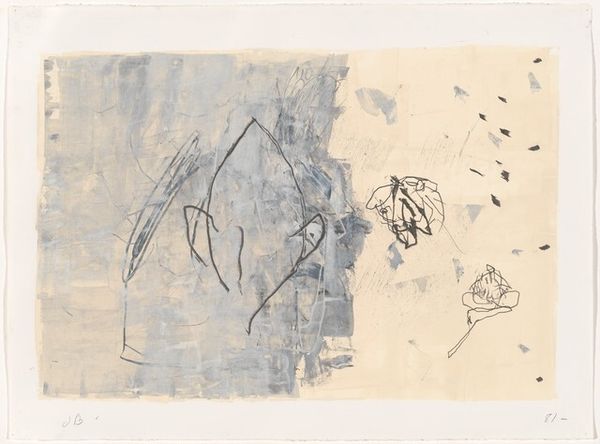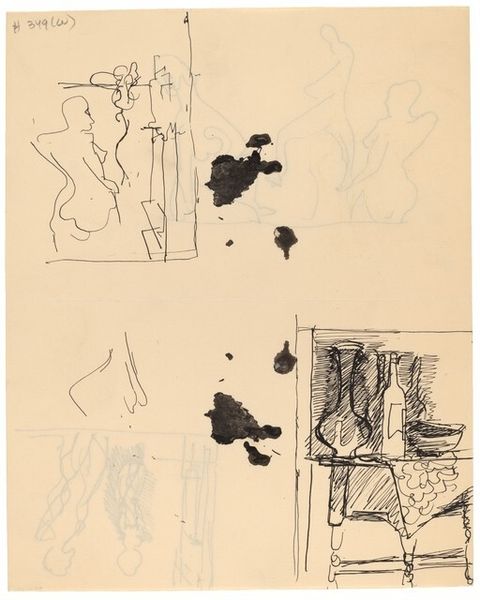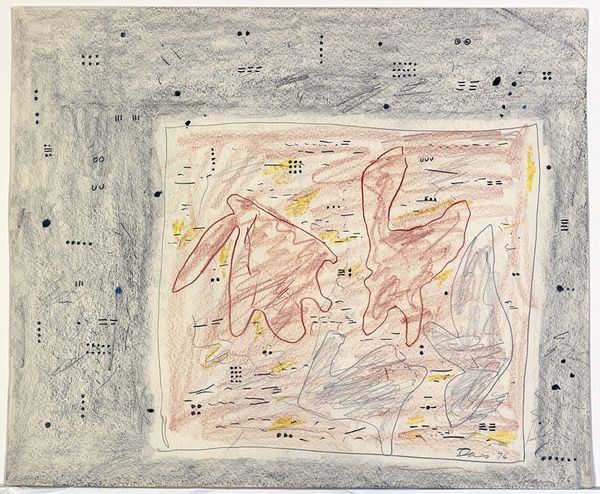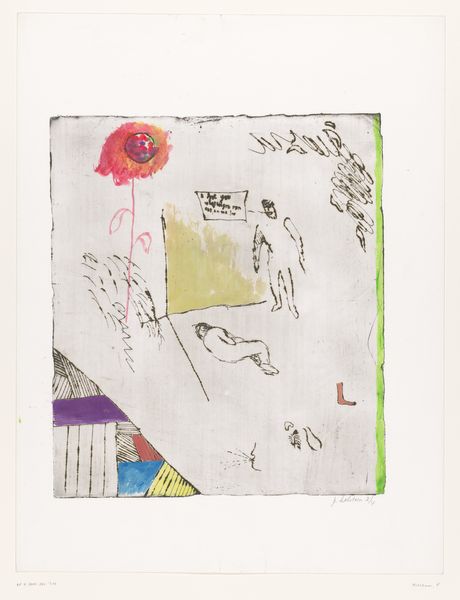
Dimensions: support: 758 x 558 mm
Copyright: © Cy Twombly Foundation | CC-BY-NC-ND 4.0 DEED, Photo: Tate
Curator: At first glance, it feels like an alchemical notebook—fragments, scribbles, and organic forms emerging from a seemingly random composition. Editor: Indeed. We’re looking at Cy Twombly’s "No. VI," currently held at the Tate. Note how he combines drawing, collage, and handwriting. The materials themselves speak to a process-driven approach, wouldn't you agree? Curator: Absolutely. The interplay of humble materials, like paper, graphite, and what looks like found images, challenges the preciousness often associated with high art. I am curious about the role of botanical imagery... Editor: Note also how the mushroom, a symbol often associated with transformation and the ephemeral, is situated alongside what appears to be a calendar grid. It evokes themes of time, decay, and the cyclical nature of existence. The illegible scribbles almost act as a barrier to concrete interpretations. Curator: It certainly speaks to the breakdown of systems, perhaps a commentary on the societal structures that demand categorization and definition. The work invites us to question the very act of assigning meaning. Editor: Precisely. It's a work that resists easy answers, prompting us to consider the fluid boundaries between intention, chance, and interpretation. Curator: The "No. VI" provides a glimpse into Twombly's artistic process and broader social commentary. Editor: A fascinating piece that underscores the importance of the historical context.
